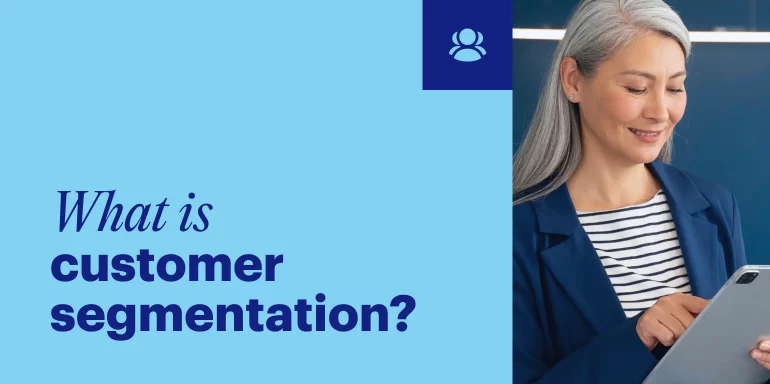Customer segmentation provides brands with critical insights into the specific needs and preferences of different customer groups.
A better understanding of customer needs allows you to tailor your customer acquisition strategies to align with the specific preferences of your customer base, resulting in improved customer satisfaction and engagement.
So, what is customer segmentation? Let’s dive right in.
What is customer segmentation, and why does it matter?
Customer segmentation is the process of dividing your audience into categories or segments based on shared characteristics, such as demographics, geographic locations, behaviors, or interests.
Customer segmentation gives you a deeper understanding of the needs and motivations of customers. You can then use this data to provide a superior customer experience and launch more impactful and revenue-generating campaigns.
Implementing a personalized approach across your marketing funnel ensures your messages resonate more strongly with each customer segment, leading to higher engagement, increased conversions, and, ultimately, more growth.
Customer segmentation vs. market segmentation— what’s the difference?
When talking about dividing up customers and markets, it’s essential to understand the difference between customer and market segmentation.
While market segmentation looks at the whole marketplace, customer segmentation focuses on a specific market subset.
For instance, if you sell vehicles mainly to businesses, you can segment the market into categories like small businesses, large enterprises, and government organizations. Each of these segments may have distinct needs and preferences when it comes to vehicle purchases.
Within the “large enterprises” market segment, the company might perform customer segmentation based on the types of vehicles they are interested in—some may require a fleet of sedans for executive use. In contrast, others might need trucks or vans for logistics, allowing the company to tailor its sales approach and services to meet the unique requirements of each subset.
Targeting specific customer segments can get better results than trying to appeal to everyone at once. This way, you can better understand and meet the unique needs of your target audience, leading to happier customers and more success for your business.
Benefits of customer segmentation
Personalized marketing
Segmentation helps you create marketing messages and offers tailored to each customer’s unique persona, helping you make an elevated user shopping experience.
Imagine sending out emails that speak directly to the recipient—their interests, purchase history, and preferences. This level of personalization is the competitive edge, allowing brands to foster deeper connections with their audience through tailored content and offers.
For example, this Calendly email not only contains the recipient’s first name but also addresses the challenges a new user might face during onboarding and walks them through the key steps to improve scheduling.
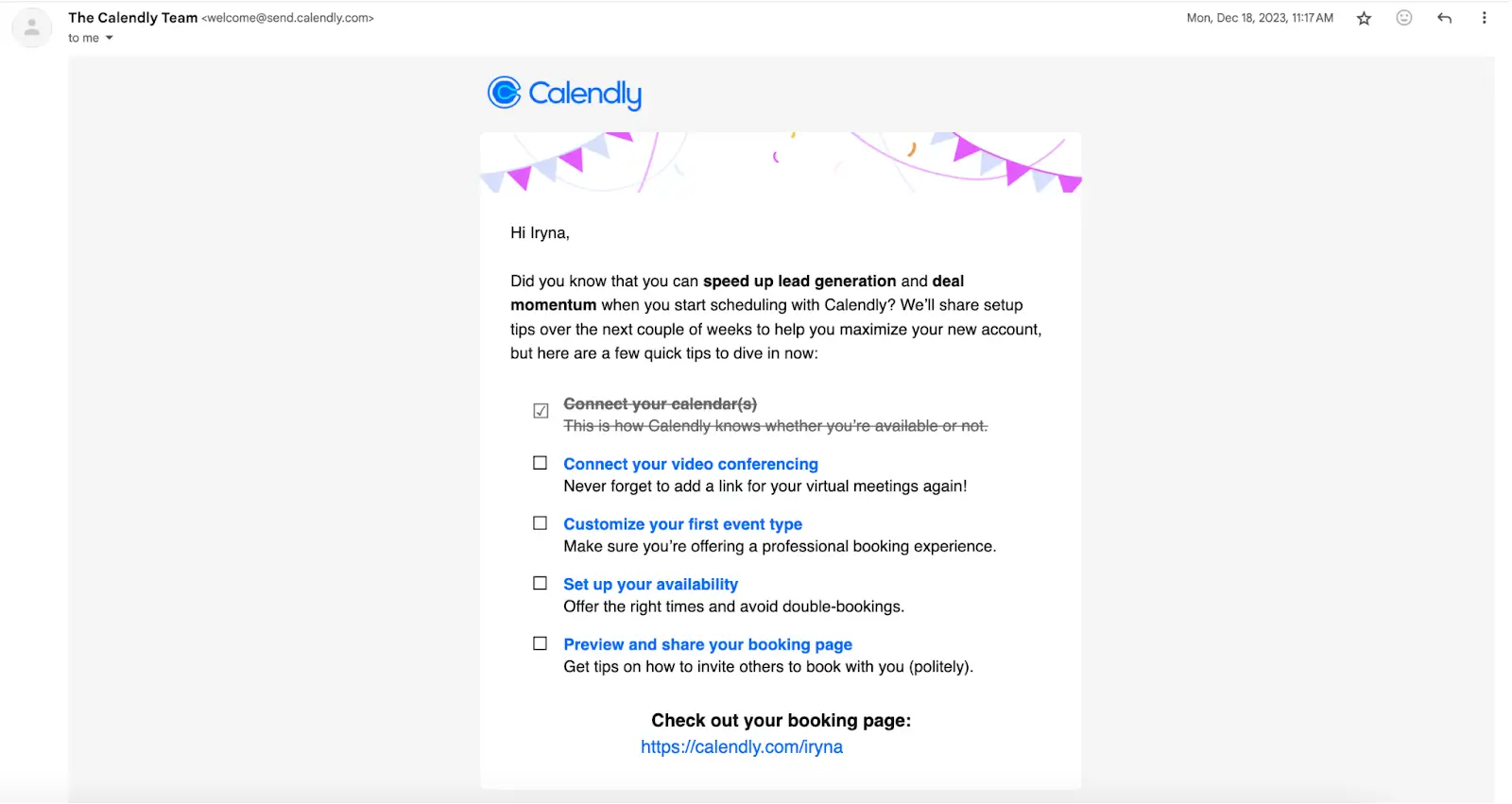
Improved customer retention
Catering to the unique needs of different customer segments can significantly boost customer satisfaction, leading to improved loyalty and higher retention rates. Keeping your current customers is more cost-effective than finding new ones. Research suggests that boosting customer retention by just 5% can spike profits by 25% to 95%.
Competitive advantage
Using customer segmentation to create a more personalized and satisfying customer experience can help you differentiate yourself from competitors. This can help you establish a strong brand identity and build a competitive advantage over time.
Optimized marketing messages and offers
By categorizing customers based on specific traits or behaviors, you can create more compelling marketing messages and precise offers that resonate with different segments, maximizing your return on investment.
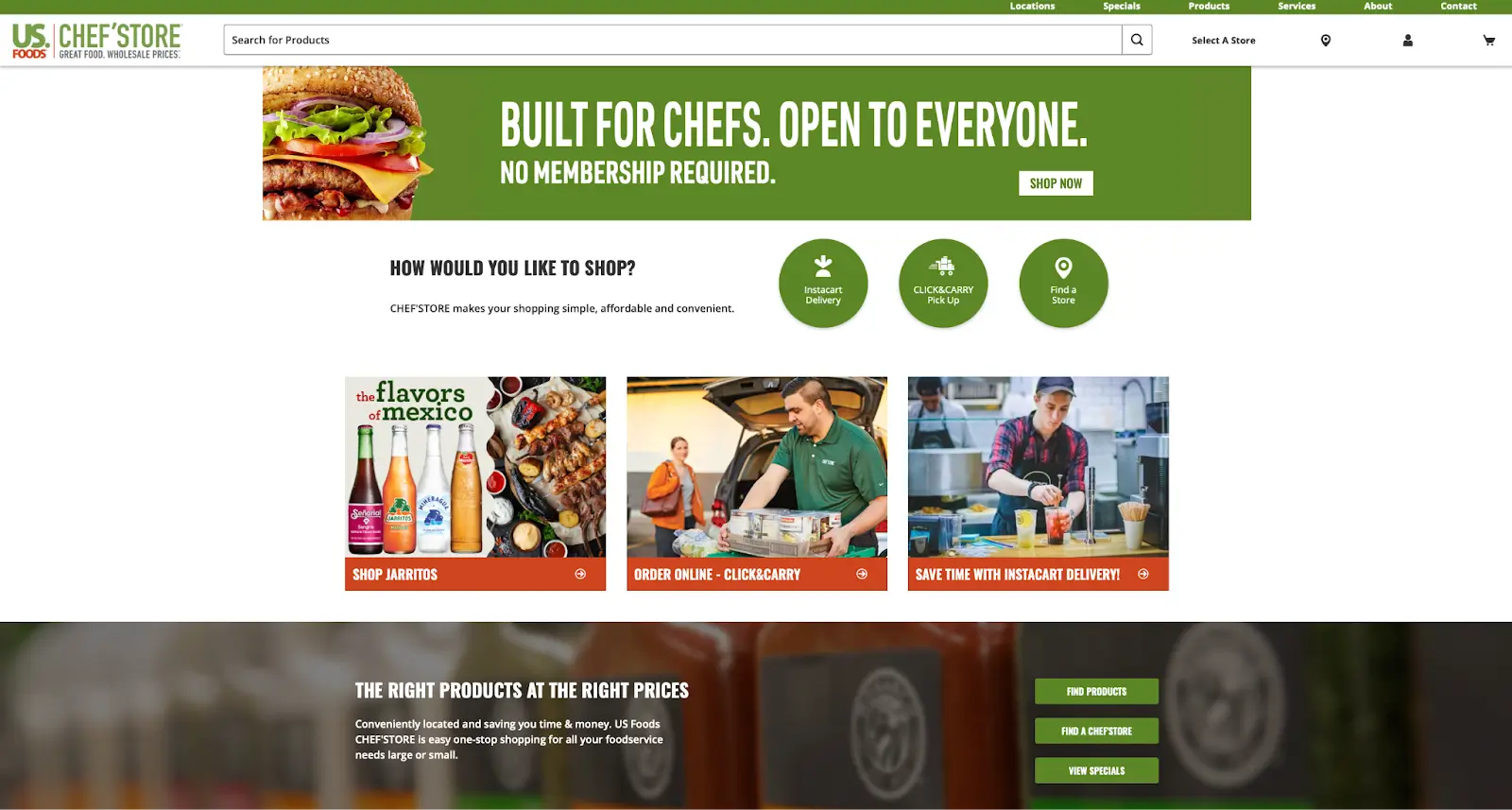
Improved customer experience
Aligning your products, services, and touchpoints with the preferences of your various customer segments ensures that each interaction is enjoyable and leaves a lasting impression.
A study involving 1,300 organizations across 80 countries found that 84% of those prioritizing customer experience saw revenue growth, with 79% reporting notable cost reductions.
Enhanced brand awareness
Customizing marketing communication for different customer segments can lead to a better connection between the customer and the business, ultimately increasing brand awareness.
For instance, BMW’s “Generation of Joy” campaign, launched in 2022, specifically targeted millennials and Gen Z, referred to as “new luxury consumers” expected to fuel future growth. The campaign sought to expand BMW’s brand awareness beyond its traditional premium segment customers and resonate with younger audiences.

Types of customer segmentation: How to target different customer segments
Marketers need to identify new customer segments and target existing customers to get the most benefits from customer segmentation. Each segmentation approach is based on specific key variables.
Demographic segmentation
Demographic segmentation identifies specific consumer groups based on age, gender, marital status, family size, income, education, race, occupation, nationality, and/or religion. It’s one of the four primary types of marketing segmentation and is widely employed due to its effectiveness and versatility.
Mom Store segments audiences by marital status and gender—they target women looking for baby gear and maternity goods.
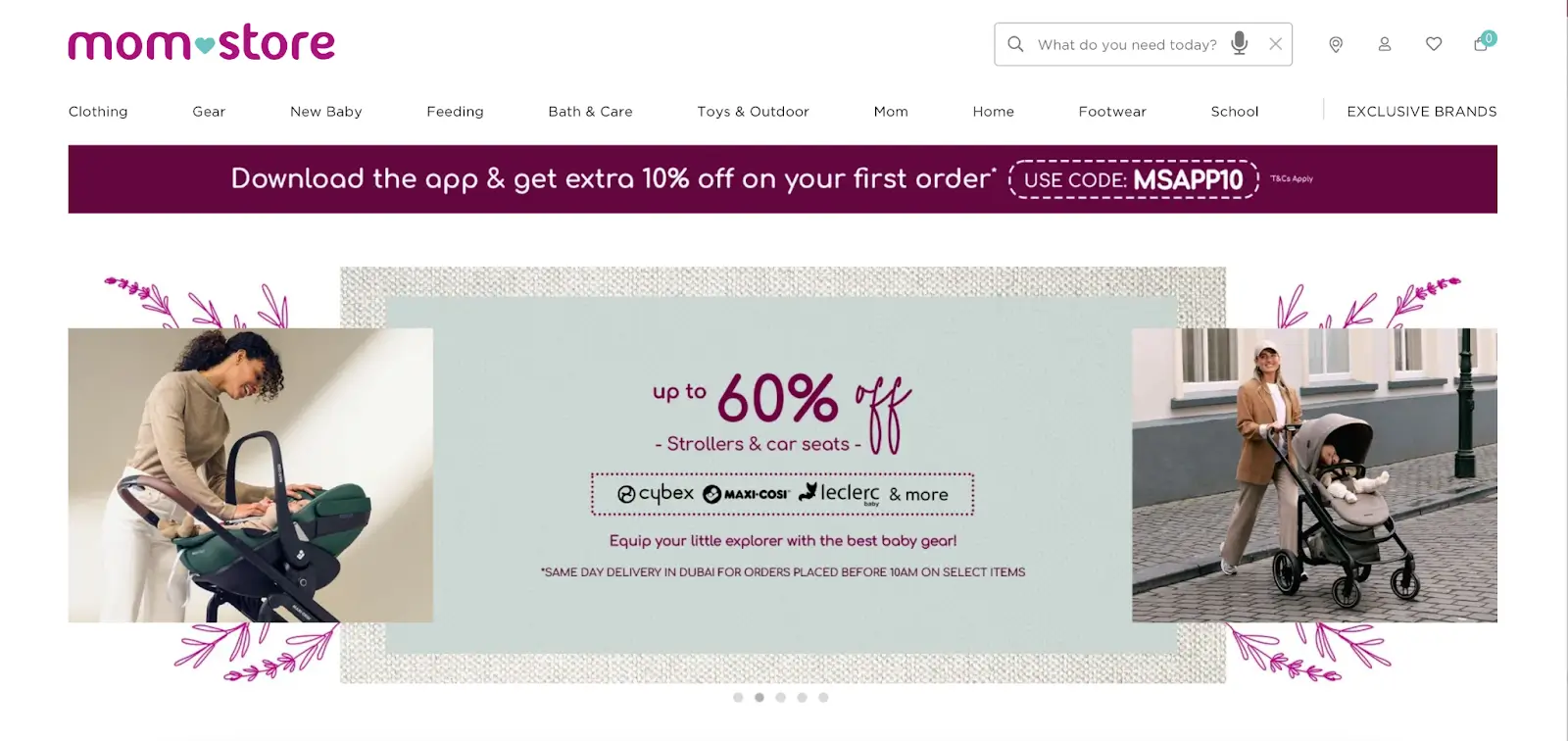
Behavioral segmentation
Behavioral segmentation categorizes consumers based on their behavior patterns when engaging with a brand. Behavioral segmentation focuses on studying various customer behaviors, such as consumers’ knowledge of, attitude towards, usage of, preferences for, or response to a product, service, promotion, or brand.
Medik8, a UK-based professional skincare brand, highlights the advantages of its products in combating aging and pigmentation.
Benefit segmentation can help skincare brands like Medik8 identify the different pain points of their customers, segment them accordingly, and match the segments with suitable products.
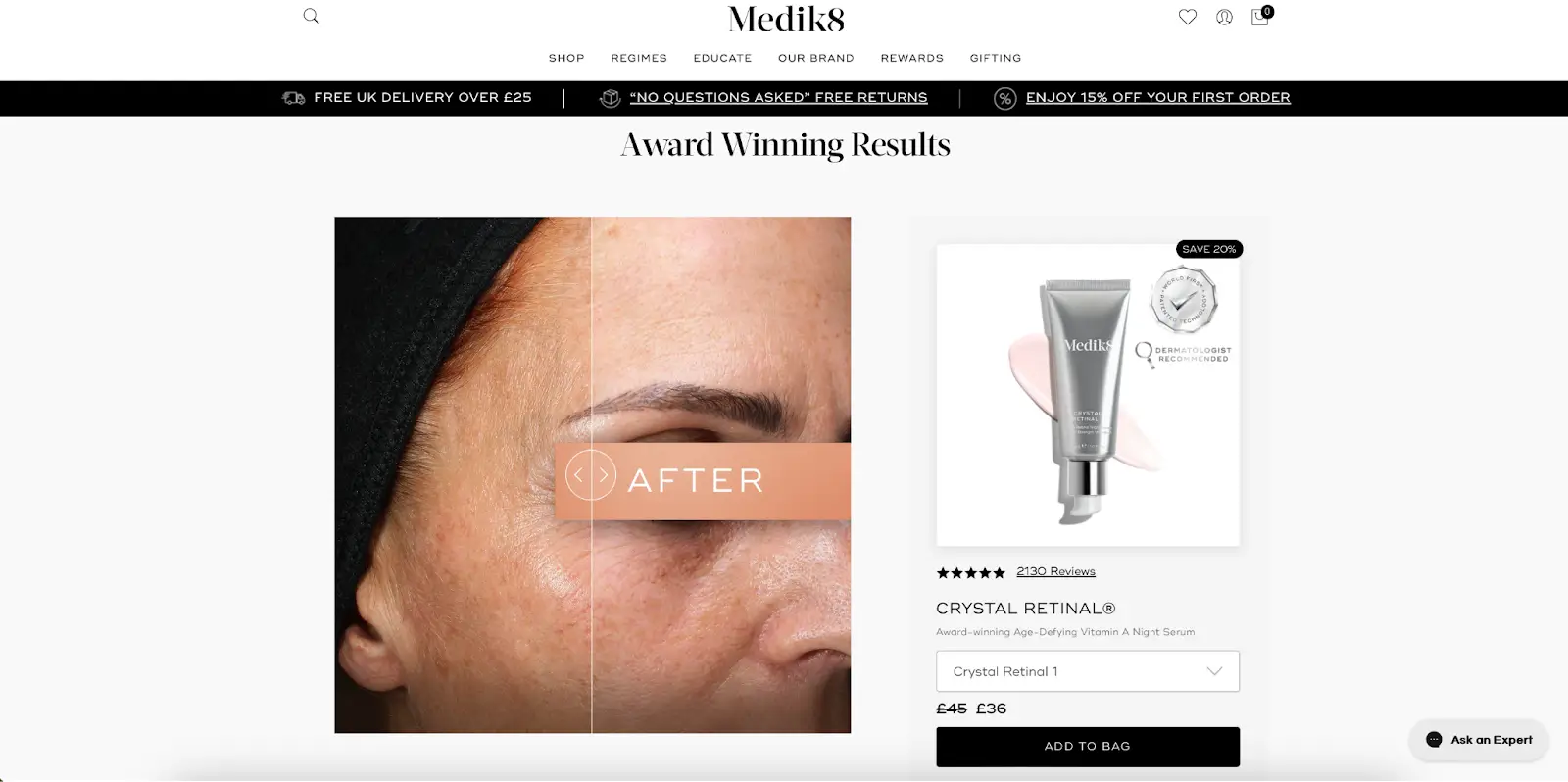
Psychographic segmentation
Psychographic segmentation sorts consumers into groups based on psychological factors affecting their purchasing decisions, such as lifestyle, interests, values, personality, social class, etc.
Nissan Leaf connects with consumers based on their desire to have a lifestyle and values like using an environmentally-friendly vehicle to prevent pollution:
Geographic segmentation
Geographic segmentation divides customers based on geographic units such as countries, states, and cities. It also considers factors like climate, cultural preferences, population demographics, and other geographic attributes extending beyond simple geographical boundaries.
Location can significantly influence buying habits, product preferences, and positioning. Like many global brands, KFC uses geographic segmentation to ensure that their offering is aligned with local market needs:
Firmographic segmentation
Firmographic segmentation involves categorizing businesses based on characteristics like industry, company size, revenue, location, and organizational structure. Unlike consumer-focused segmentation, firmographic segmentation is used in B2B marketing to identify and target specific types of businesses.
By analyzing firmographic variables, companies can effectively tailor their marketing strategies and offerings to reach their target audience within the business sector. This approach lets you target your resources on the most promising market segments, leading to more efficient marketing efforts and higher ROAS in B2B marketing initiatives.
Firmographic segmentation helps businesses understand the unique attributes and needs of different business segments, enabling them to develop targeted approaches that resonate with their target audience in the B2B marketplace.
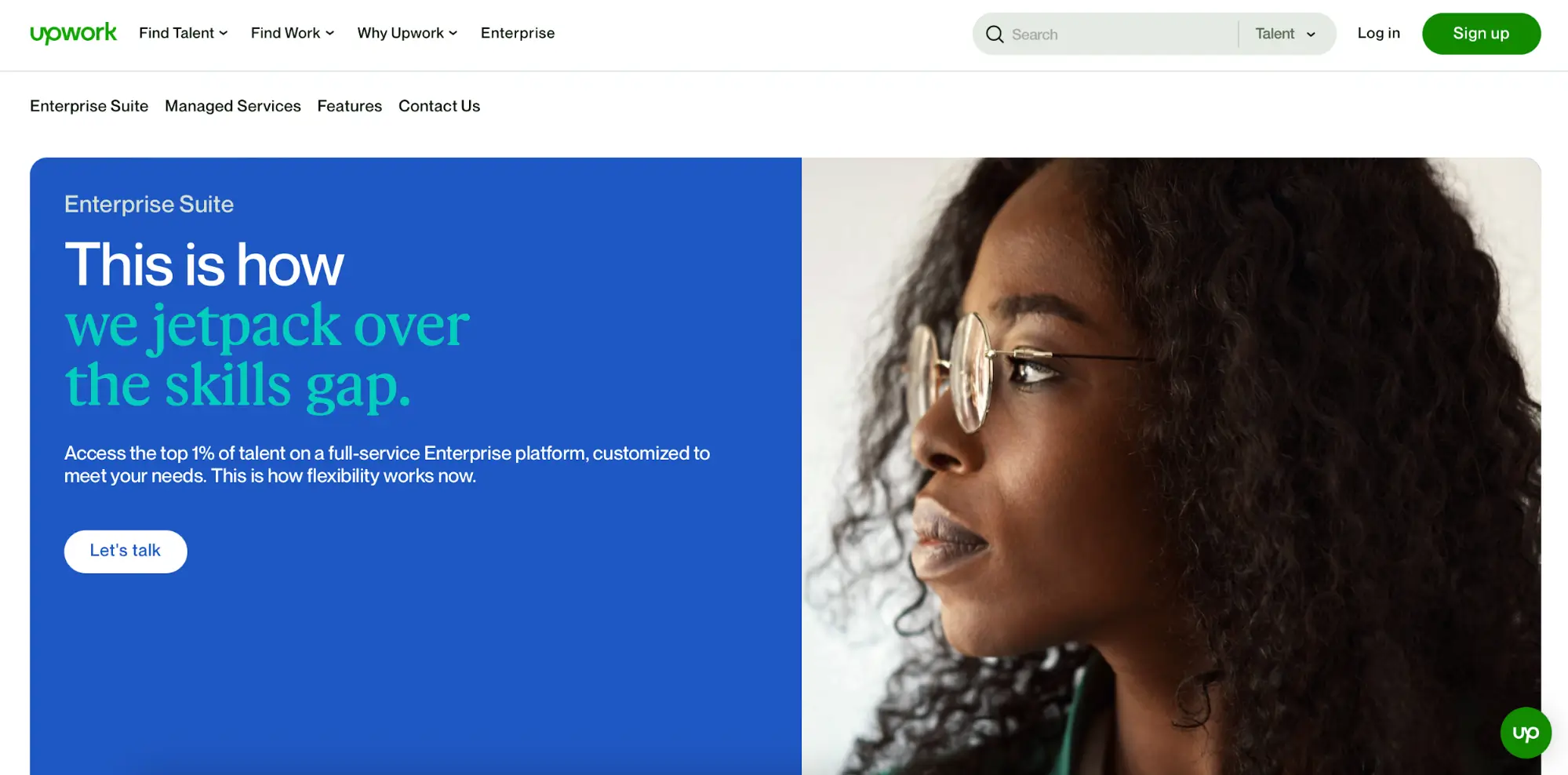
Customer segmentation examples
H&M
H&M is a global clothing brand that uses geographic segmentation for first-time visitors to forward them to a local H&M website in their country to show location-specific offers.
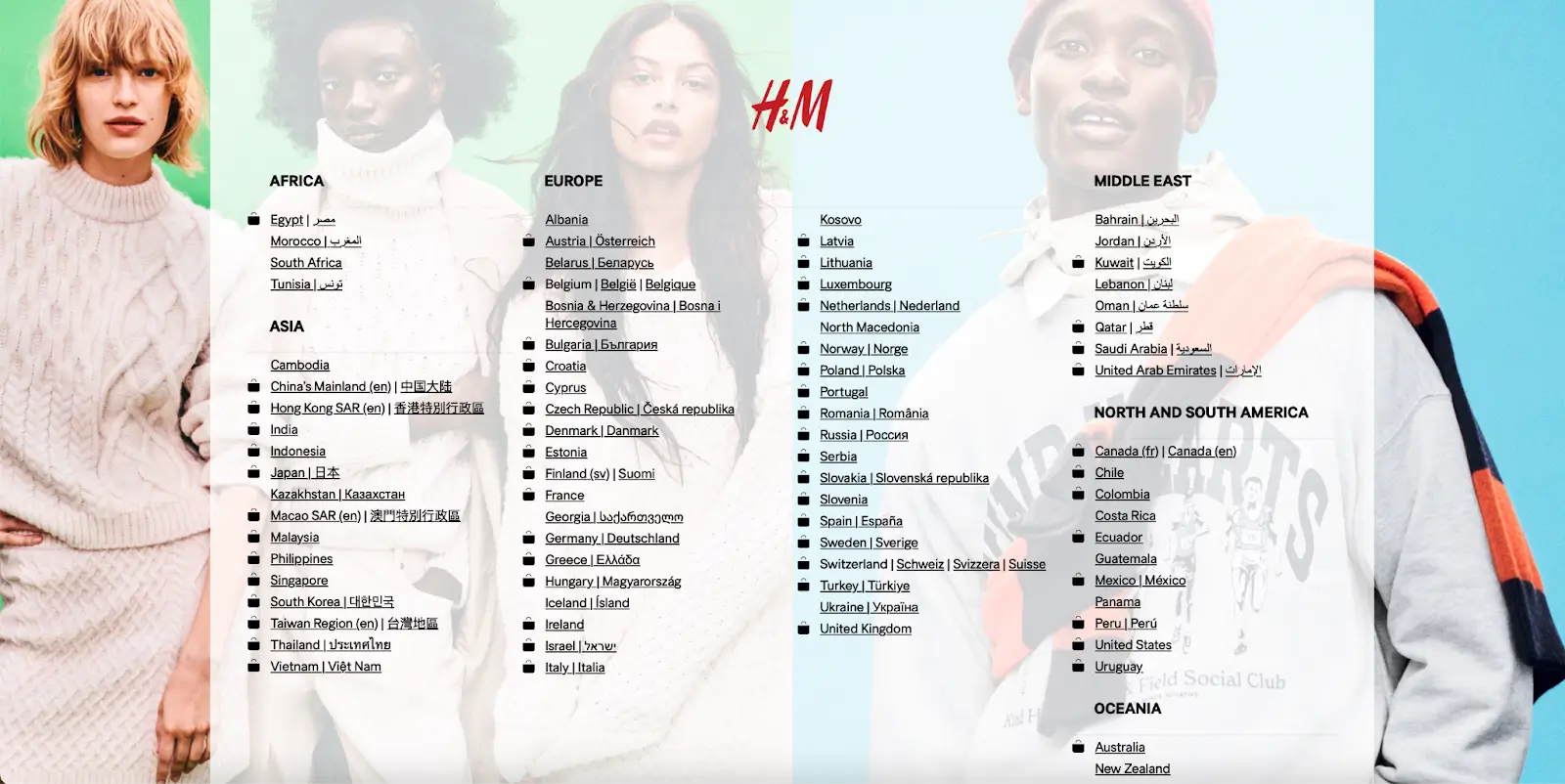
GAP
GAP uses a benefit-sought behavioral segmentation by showing a pop-up offering a discount to first-time visitors of their website.
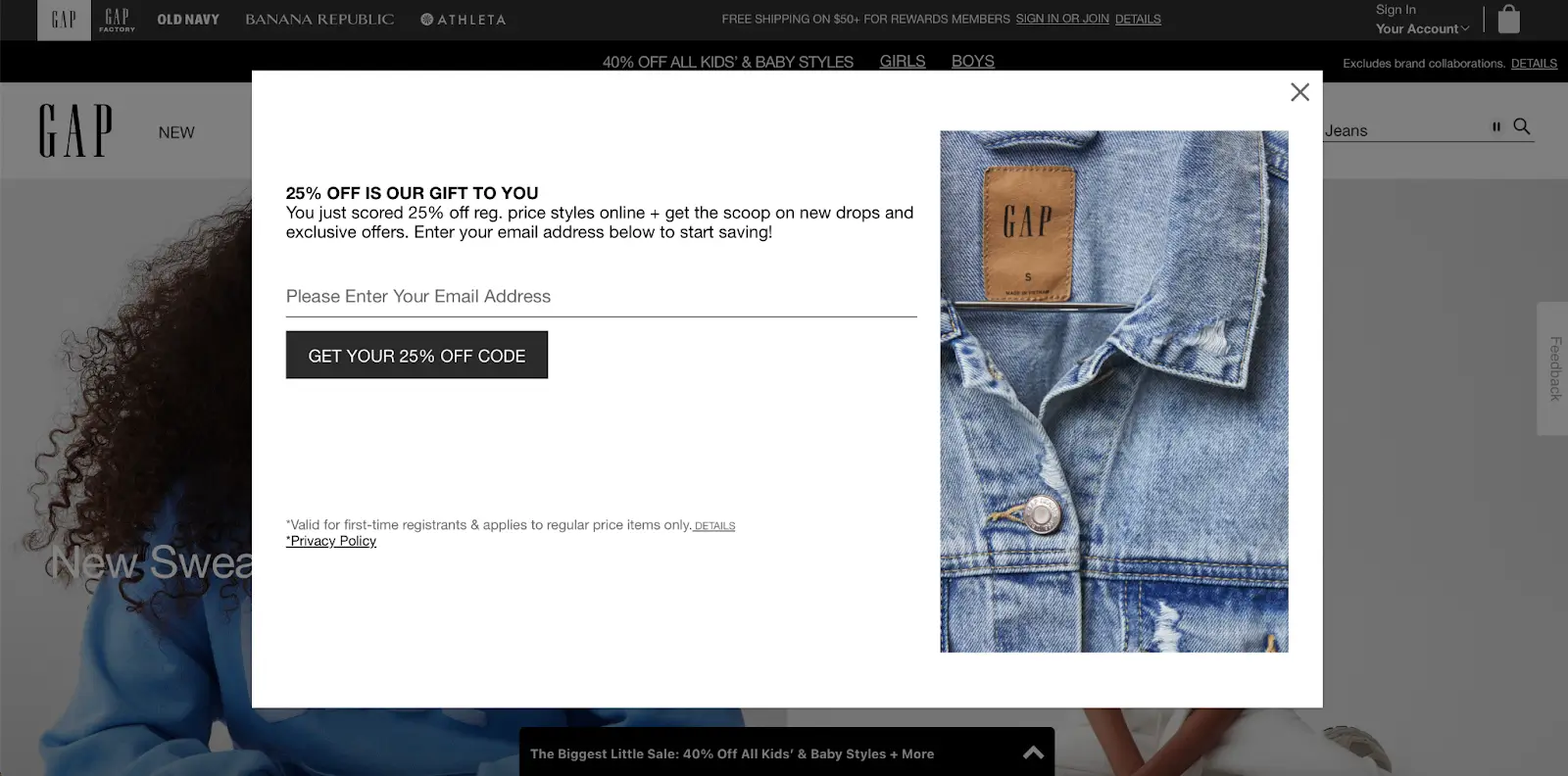
Jabra
The headphone brand Jabra uses lifestyle-based psychographic segmentation. The Jabra website is built to make it easier for customers to select the right headphones based on their personal or professional needs.
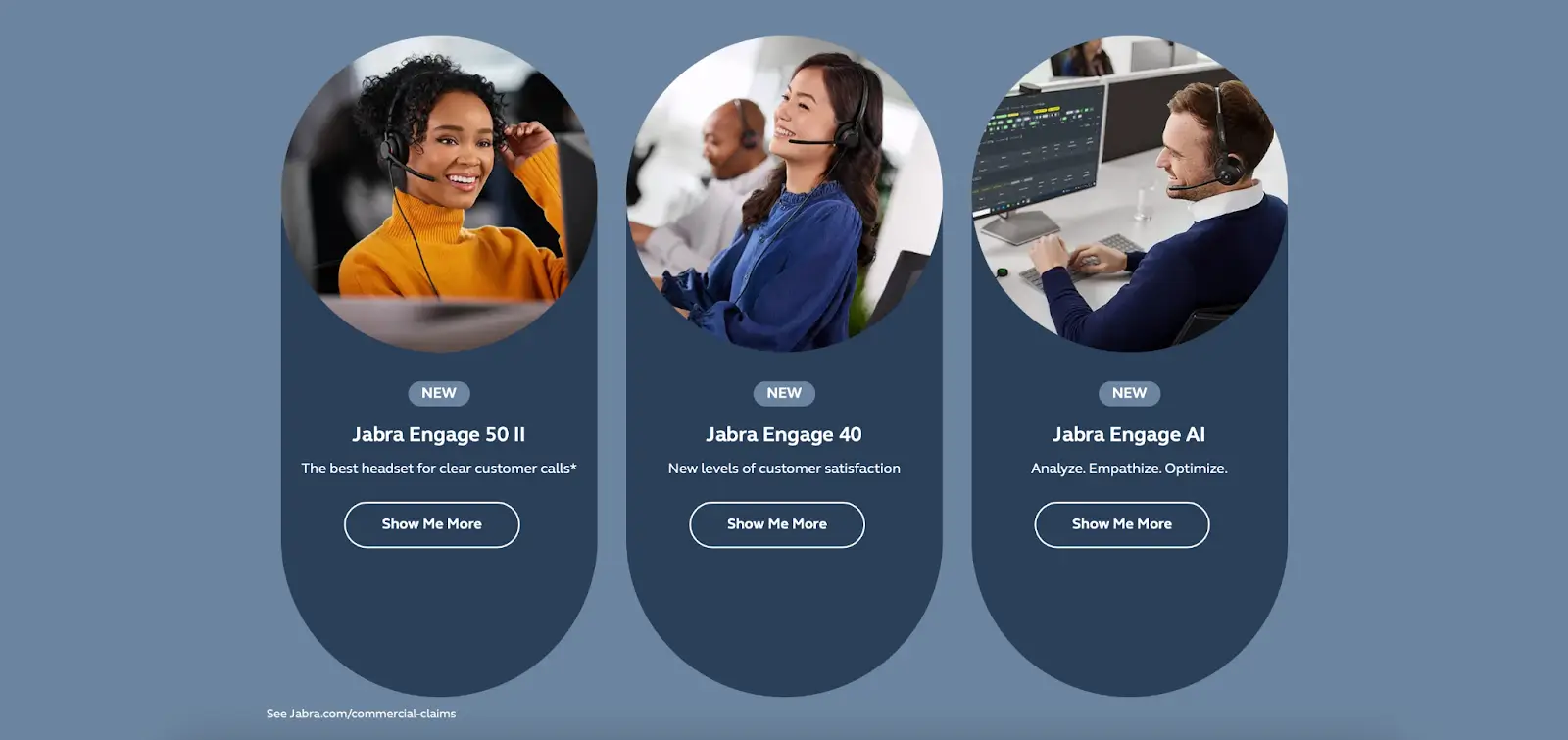
How to segment customers and target them effectively
- Define your goals: Clearly outline the objectives you aim to achieve through customer segmentation. Whether it’s increasing sales, improving customer satisfaction and brand loyalty, or enhancing marketing efficiency—setting clear goals will guide your segmentation process.
- Gather data: Collect relevant data about your customers, including demographics, behavior, purchasing patterns, preferences, and interactions with your brand. Use both quantitative data (e.g., sales records, website analytics) and qualitative data (e.g., surveys, customer feedback) to gain comprehensive insights.
- Identify segmentation variables: Determine the criteria or variables you’ll use to segment your customers. These variables can include demographic (age, gender, location), behavioral and psychographic data (lifestyle, interests, values, purchase frequency, buying preferences), etc.
- Segment customers: Analyze the collected data and segment your customer base into distinct groups based on the identified variables. Use segmentation techniques like clustering analysis, RFM (Recency, Frequency, Monetary) analysis, or personas to divide customers into meaningful segments.
- Validate segments: Assess the validity and relevance of the identified target groups by evaluating factors such as distinctiveness, measurability, accessibility, and actionability. Ensure each customer segment is sufficiently large and homogenous to warrant targeted strategies.
- Develop segment profiles: Create detailed profiles for each customer segment, outlining their characteristics, needs, preferences, and behaviors. Use qualitative insights and market research to enrich the profiles and understand the motivations driving each segment.
- Prioritize segments: Determine the priority or importance of each segment based on factors such as profitability, growth potential, and alignment with business objectives. Allocate resources and efforts accordingly, focusing on segments offering the most significant value creation opportunity.
- Tailor marketing strategies: Develop customized marketing strategies for every segment based on their unique profiles and preferences. Personalize messaging, offers, channels, and experiences to resonate with the specific needs and interests of each segment.
- Implement and monitor: Execute the segmented marketing strategies across various channels and touchpoints, consistently monitoring performance and feedback. Track key metrics and indicators to assess the effectiveness of your segmentation model and make adjustments as needed.
- Use customer segmentation software: Use customer segmentation tools like Segment, LeadLander, Userpilot, Baremetrics, Heap, and Kissmetrics to automate the segmentation process and gain deeper insights into your customers.
- Iterate and refine: Continuously review and refine your customer segmentation strategy based on ongoing insights, market dynamics, and business objectives. Adapt your segmentation criteria and techniques to accommodate changes in customer behavior and market trends.
Where to get customer data for customer segmentation?
You’ll need to gather data from both direct and indirect sources to segment customers properly:
- Direct sources involve collecting customer responses through satisfaction surveys, post-purchase feedback, and brand tracking.
- Indirect sources gather data from various channels like social media, website analytics, and frontline feedback, providing insights into customer behavior from third-party sources.
Once you’ve gathered and analyzed this data, you can identify patterns and create customer segments. These segments are crucial for shaping your brand’s messaging, positioning, and overall strategy, which ultimately helps improve your business performance.
Understanding how different customer segments behave allows you to customize their experience, making it easier for them to navigate and complete their journey with your brand.
It’s essential to align your customer segments with your business objectives. For example, your segmentation approach may differ if you’re facing competition or launching a new product. Asking critical questions about your goals will help determine the level of detail needed for effective segmentation.
Elevate your customer segmentation strategy
Prioritizing customer segmentation is essential for building meaningful connections with your audience. By understanding different customer segments’ diverse needs and preferences, brands can cultivate loyalty and achieve a higher return on investment. It’s important to recognize that customer segmentation is an ongoing process requiring continual adaptation to evolving customer behaviors and preferences.
The key insight here is straightforward: the deeper our understanding of our customers, the more effectively we can meet their needs. By prioritizing customer-centric strategies, we not only earn their trust and business but also foster long-term loyalty and satisfaction.
Discover how customer segmentation can be seamlessly integrated into your marketing efforts with Instapage.
With Instapage, you can create personalized experiences in minutes—quickly build unique landing pages for each campaign and attach experiences to specific audiences using UTM parameters.
Sign up for a free 14-day trial to revolutionize your approach with Instapage’s personalization feature.

Try the world's most advanced landing page platform with a risk-free trial.
